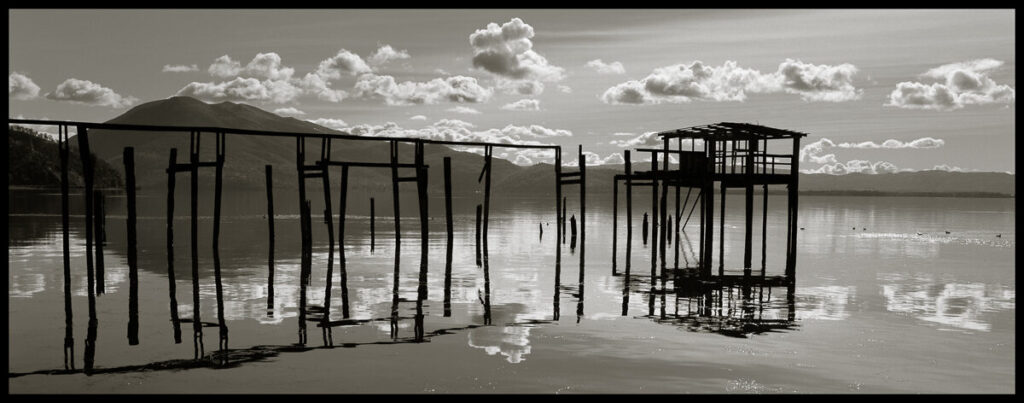I’ve been making photographic artworks for fifty years. During my transition from darkroom silver gelatin printing to today’s digital pigment printing process, I have continued to use the finest materials available and exacting craftsmanship to insure the beauty and longevity of your print.
The Materials: The beauty of the print is paramount. I use the finest pigment inks, papers and matting available to express in my prints what I saw and felt when I recorded the original image.
Longevity of the Print: I insist that my prints are not only beautifully expressive, but that they will keep their luminous presence without fading or discoloring. The processes and materials that I use guarantee their archival quality.
I started printing in the early 1980s in the classic wet darkroom. The gelatin silver prints I made then were processed using best practices to create luminous prints that would last for generations. The process was fastidious in order to make the finest and most enduring photographic prints possible at that time.
As digital printing became available I waited patiently on the sidelines to see if expressive monochrome prints with the essential archival quality I sought could be produced. In 2010 a friend proved to me that I need not wait any longer. From scans of my original negatives he made several prints on his professional Epson printer. These prints were a revelation. They were truly neutral in color without the objectionable magenta or cyan casts I had seen in earlier inkjet prints. As I looked at these new pigment prints I realized they equaled and in some cases exceeded the quality of the silver prints I had been making!
I was excited and anxious to begin the process of learning the new technology. As I trained myself, I researched to find out what data supported the longevity factor of my new materials. I was pleased to discover that using Epson’s Ultrachrome K3 inks on acid-free fine art cotton papers, the archival quality of the new prints could equal the selenium-toned gelatin silver prints I had made up to then. Armed with the visual experience of the beautiful tonal appearance plus knowledge of the archival qualities, I was all in!
Epson’s K3 Ultrachrome pigment-based inks rely on three levels of black to create the continuous tones we love in our photographs. Trace amounts of color are added to create the slightly warm tones I favor in my prints. There are no brighteners in the cotton papers I use which ensures no fading, yellowing or color shifts that can occur with less expensive paper and ink.
A word to the wise…
I recommend that anyone considering the purchase of any photograph ask the artist what kind of ink and papers are being used. If they can’t verify they are using the highest quality materials or they simply don’t know, be wary! Much of what is being sold as “art” is being produced with lesser materials which can lead to disappointment in the long run as the cherished image fades or discolors with time.
THE NEW PRINTS
Today, after more than 10 years of printing with pigment-imbued inks on the finest paper, I am convinced that the new prints I make today are more beautiful than my original silver prints. The degree of tonal control and the subtle expression of these tones are exciting for me and my collectors. Add to this the assurance that these prints will retain their beauty as they are passed down through several generations and we all win.
MATTING & FRAMING
The same care to the matting and framing of these prints is given as takes place in the actual printing. Once the print is made, it is cured for about 12-24 hours to allow the pigments to settle into the paper’s surface. Next, a mat with a beveled window is cut from acid-free cotton rag matboard. The window is offset a few millimeters to reveal the full composition, the number and signature in the margin. Next, the matted print goes into a black wood frame glazed with Tru-vue Ultraview glass (truly anti-reflective and UV protected glass). A paper back with wire finishes the artwork. The numbered editions are accompanied with a certificate on the back which details size, reference number, title and date the original image was created.
When you select a Marty Knapp photograph, whether it is an intimately presented miniature or a larger dramatic edition for your wall, you can be assured that the finest materials and attention to detail have gone into your artwork. Your photograph will last for generations without losing any of its original beauty. I personally print, mat and frame every photograph that leaves my studio to assure this singular quality.
When the artwork is finished, you will have an enduring piece of beauty that reflects what I saw and felt during the original exposure. Every signed Marty Knapp photograph has been conceived by me and created from my own hands.
